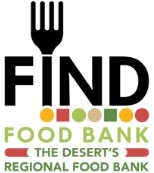Pass H.R.6613, Keeping School Meals Flexible Act
Congressional child nutrition waivers that allowed for free meals in school and other food assistance measures are expiring June 30. NBC News
If the waivers end this month as scheduled, experts foresee a crisis as families, already facing soaring prices at supermarkets, gas stations, and elsewhere, lose access to meals that their children have counted on for the last two years.
The waivers let families pick up multiple days’ worth of food to take home, without them students have to stay on-site to eat one meal, an obstacle for families who lack transportation and time.
If the waivers expire, 7 million kids could lose access to two meals a day. Food and Environmental Reporting Network
FIND Food Bank alongside Congressman Raul Ruiz, our partnering school districts, PSUSD, DSUSD, and CVUSD, as well as national, state, and local organizations, ask Congress to further extend USDA’s nationwide waiver authority through the school year 2022-23 to ensure USDA has continued flexibility to respond to the ongoing and evolving impacts of the pandemic as well as its aftermath and to ensure that the federal child nutrition programs continue to operate and provide healthy snacks and meals to students.
Join Us:
Take Action with Feeding America
Many rely on strong federal nutrition programs like the Supplemental Nutrition Assistance Program (SNAP), child nutrition programs like the Summer Food Service Program (SFSP), and federal commodity foods through The Emergency Food Assistance Program (TEFAP) and Commodity Supplemental Food Program (CSFP). Help advocate for federal nutrition programs with FIND and our network of 200+ Feeding America Food Banks working to fight hunger collectively in our communities.
Revisions to Thrifty Food Plan October 2021
SNAP Benefits will jump 27 percent above pre-pandemic levels, thanks to a revision of the Thrift Food Plan which controls the maximum allotments for SNAP, or CalFresh in California.
The average cost of a meal in the US is $2.41 — 22 percent higher than maximum food stamp benefits, according to a recent Urban Institute report that Waxman co-authored. In 2020, the maximum benefit did not cover the cost of a modestly priced meal in 96 percent of US counties. The revision, however, will reduce that figure to an estimated 21 percent of counties.
“This is a really important towards SNAP benefit adequacy, but we’re not all the way there yet.” – Lisa Davis, senior vice president, No Kid Hungry
Learn About Local Hunger
Child & Summer Hunger
- 22 million children receive free or reduced-cost lunches during the school year, but only 3.76 million continue to access those free meals in the summer. That’s where FIND’s Kids Summer Feeding Program steps in.
- 4 out of 5 children may experience food insecurity in the desert region. We know that over 83% of students qualify for free or reduced-price meals across the three regional school districts.
- FIND feeds more than 60,000 children per month across our mobile markets and community partners. Children 0-18 years old comprise 40% of the total population we help feed.
Rural Hunger
Rates of food insecurity among rural households are generally higher than in urban households. This is due to food deserts, which is an area that has limited access to fresh, nutritious food. While there might be a gas station or fast food nearby fresh produce can be hard to find. Data collected by Feeding America reveals that 84% of U.S. counties with the highest percentage of food-insecure children are rural.
- Mercado Campesinos, FIND’s direct food distribution to farmworkers, feeds 400-750 farmworkers and their families every other week at different locations across the Eastern Coachella Valley.
- Farmworkers face a multitude of obstacles to accessing nutritious foods:
- Lack of reliable transportation and geographical isolation. A farmworker may have to drive 20 minutes or more to reach the nearest healthy grocery store.
- Income insecurity stems from extreme temperatures and extended off-seasons for agricultural workers; out of work for 2-3 weeks after they harvest one crop means they have to stretch those wages.
- Farm work is a physically intensive job leaving many immobile in their old age and unable to provide for themselves.
- Agriculture is the second-largest contributor to the Desert’s economy. Farmworkers produce over 50% of the United States’ fruits and vegetables.
In the Hi-Desert, FIND reaches area residents through our mobile market at Copper Mountain College, and a distribution branch in the Morongo Basin where surrounding food pantries and soup kitchens can pick up food for their clients. This saves them from making the hour-long trip down to the Coachella Valley to pick up food items.
Food Waste
- An estimated 40% of food grown, processed and transported in the US will never be consumed.
- When food is disposed in a landfill it rots and becomes a significant source of methane – a potent greenhouse gas with serious side effects, including climate change.
- FIND is the largest food rescue organization in the Desert. We rescued 9 million pounds of food in 2020!
- This prevented the release of approximately 747,000 pounds of the greenhouse gas methane into the atmosphere from a landfill.
Senior Hunger
- FIND fed over 23,000 older adults on average each month in 2021.
- Older households are much less likely to receive help through the Supplemental Nutrition Assistance Program (SNAP) than other households, even though expected benefits are roughly the same.
Hunger + Health
- FIND Food Bank is a healthy food bank, our total distribution is always 40-50% fresh produce.
- Read about the benefits of consistent healthy meals on Feeding America’s blog, Hunger + Health




